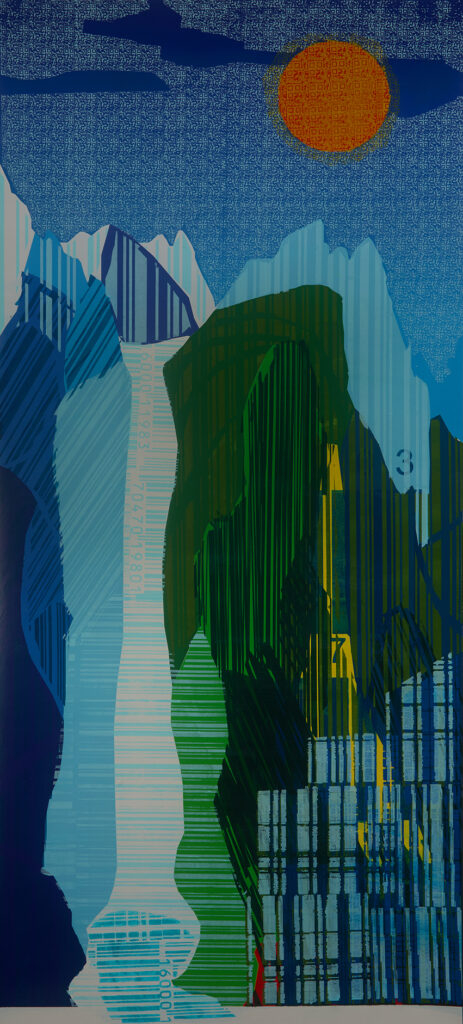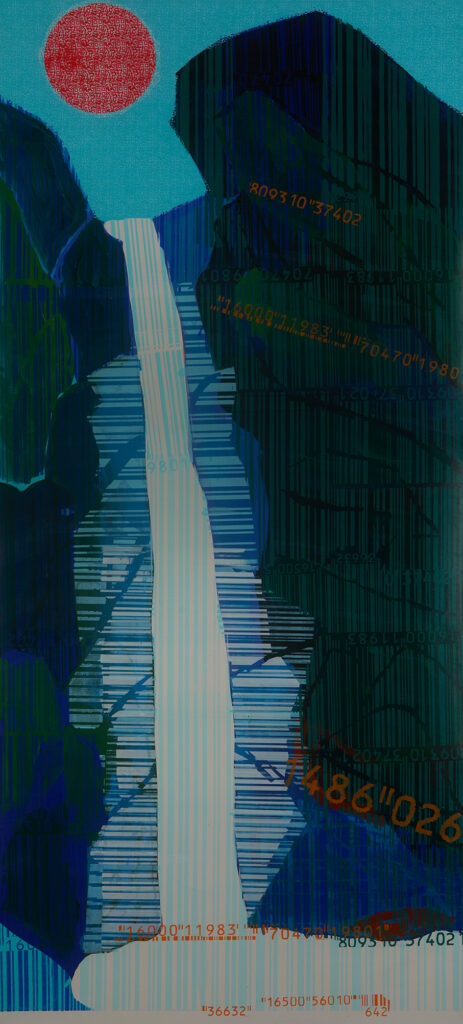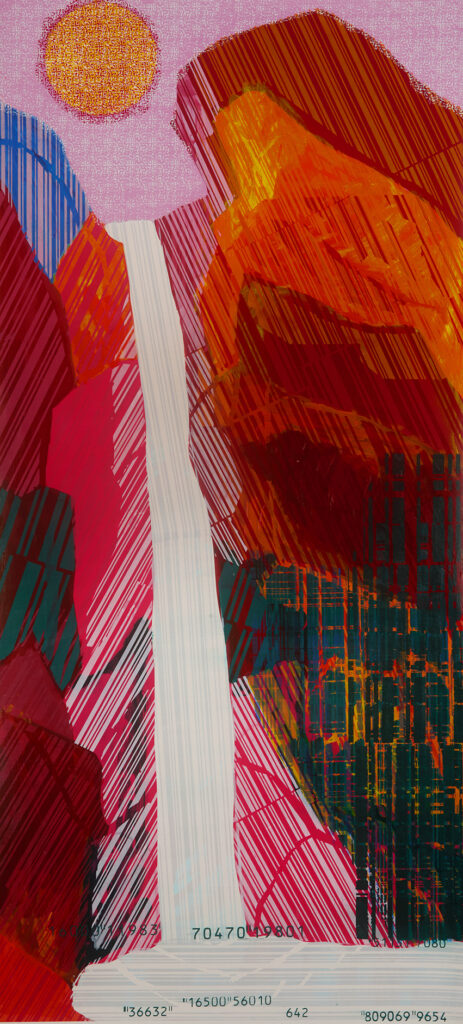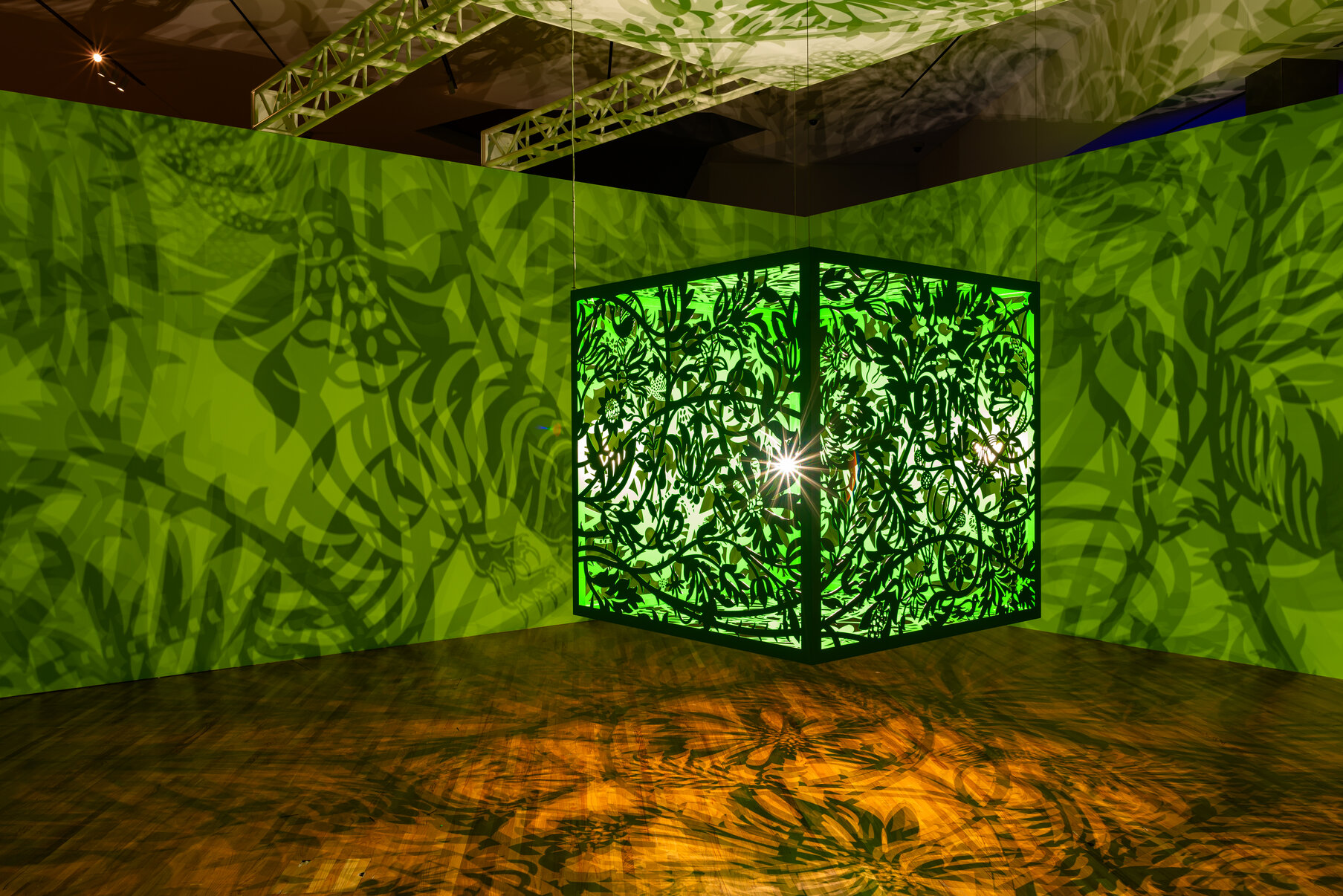by Dr. Thalia Vrachopoulos
In Hyun-Young Oh’s Barcode Landscape: Landscapes of a Coded World 2025, the notion of identity undergoes a radical reconfiguration through the reductive logic of quantification. Drawing from Byung-Chul Han’s critique of the “datafication” of existence — where the self, culture and even nature is rendered as transparent, calculable and performative — Oh’s digitalised East Asian landscapes of multitudinous barcodes, QR codes and Bitcoin motifs function as contemporary vistas of a quantified cosmos. The formative identity of subjects within today’s electronically-mediated society — what Han calls the digital totality — which is no longer constituted through an imaginal proliferation of mythical metaphors, but through digitized codes, results into a homogenizing datafication of reality, in which the mythical opacity that forms identity is erased. Every mythical image is reduced into an algorithmic code; and every poetic idea collapses into an abstract equation.

Hyun-Young Oh vividly renders these cataclysmic shifts of electronic devouring through the intricate use of traditional Korean iconography. For instance, the cosmogonic mountain ridges of The Painting of the Sun, Moon and Five Peaks or the Irworobongdo — a dynastic symbol of the Joseon royal court — are reframed here as a digital womb of decontextualized codes, while the winding rivers, towering peaks and spectral moons of the sansuhwa painting style are translated into infinitesimal grids of information. These digitalised landscapes of randomised inventory codes and infinite-spawning quick response codes no longer anchor any type of cultural belonging; they become anonymous data, circulating freely across endless, circulating networks.
From within these hyper-networked mountains and the glow of electronic moonlight, compact masses of anonymous metropolises ascend like shattered fragments of a global motherboard all the way up to the fragmented sky; an architectural foreshadowing of digital chaos, before it is compressed into the lucid flatness of the screen held in the palm of the hand. In this digital fever-dream any regional identity deteriorates into global anonymity.

In this way, Hyun-Young Oh reveals that identity, that ceases to be national, territorial or genealogical and becomes something automatically generated, decoded and recoded through an endless digital circulation like an ouroboric feedback loop. For Marshall McLuhan, each medium reshapes the human sensorium and creates collective identity; the typewriter and print culture of the Renaissance undergirded the formation of national consciousness through linear and sequential thought. In contrast, digital media engender an international simultaneity. An engulfing “global village” that dissolves borders and hierarchies, replacing narrative continuity with networked multiplicity. But Oh’s iridescent landscapes of digital identifiers and ever-generating bitcoins neither lament nor celebrate this unparalleled transformation, but instead they delve into its paradox. The analogue gestures of gentle brushwork dreamily merge with the convoluted geometry of digital computation.

Traditional Korean iconography is not here to be read as a nostalgic ruin or a reactionary remnant of the past; rather, it functions as a recurring leitmotif of a newly emerged digital cosmology. The system-generated cipher codes and reprogrammed QR patterns do not hopelessly liquidate these enchanted panoramas of mystical mountaintops —such as the primordial Mount T’aebaek of Korean mythology — but they re-translate them into new contemporary idiom of today’s hyper-technological culture; tradition, once confined to charred horizontal boundaries on a two-dimensional plane, is now refracted through these mainframe codes of digital cryptocurrencies and scanning e-images into a mobile and vertical circuit that traverses the entire inhabited world with inexhaustible bandwidth. In Oh’s fluorescent canvases, identity is no longer a static essence but a continuously updating system; a cultural algorithm that retains traces of history even as it generates new mythical topographies. In encoding traditional Korean painting into the circuitry of the digital, Hyun-Young Oh profoundly succeeds in reforming a hybrid interface, merging thus the abysmal gulf of tradition and digitality.
